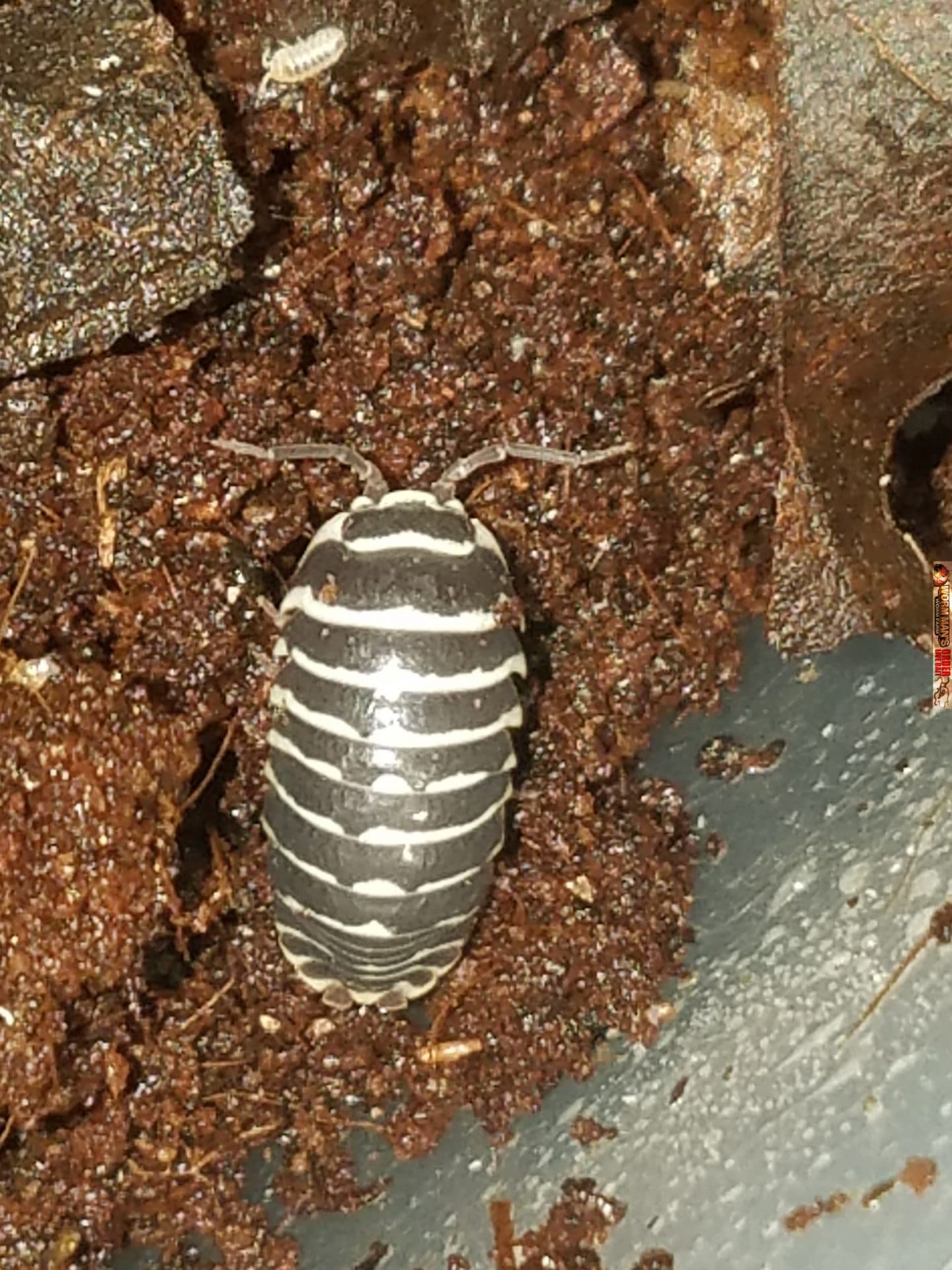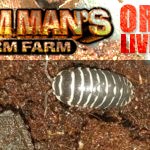
The Clown Isopod is a gorgeous crustacean adorned with colorful spots and a light fringe around the body that gives an almost glowing appearance. This is a Roly Poly and will curl up when disturbed.
We raise these the same way that we raise our Zebra Isopods, and some of our Spanish Isopods, which means that they enjoy warmer and drier conditions. We keep 75% of their housing dry and we have 25% moist and covered so that they can retreat to moisture if they need to. If we notice that they are spending a great deal of time near the moist spot then we know that it is time to lightly spray the dry area to increase humidity. That usually gets them moving throughout their home again.
They love fish food and bakers yeast. We also provide carrots, vegetables and fruits weekly in small amounts.
The breed well at temps between 80 and 95 degrees.
Isopod Name: [types field=’roach-name’][/types]
[types field=’image’ alt=’%%ALT%%’ title=’%%TITLE%%’ size=’full’ align=’none’][/types]
Housing Requirements: [types field=’housing’][/types]
Food Preferences: [types field=’food-preferences’][/types]
Temperatures: [types field=’temp-requirements’][/types]
Breeding: [types field=’breeding’][/types]
Substrate: [types field=’substrate’][/types]
Size: [types field=’size’][/types]
Humidity: [types field=’humidity’][/types]
Difficulty Rating: We give the Clown Roly Poly a rating of Mid-range difficulty. The warmth and humidity/airflow requirements cause this Isopod to be slightly more difficult to culture, but they are still easier than some of the Spanish or Asian sow bugs.






